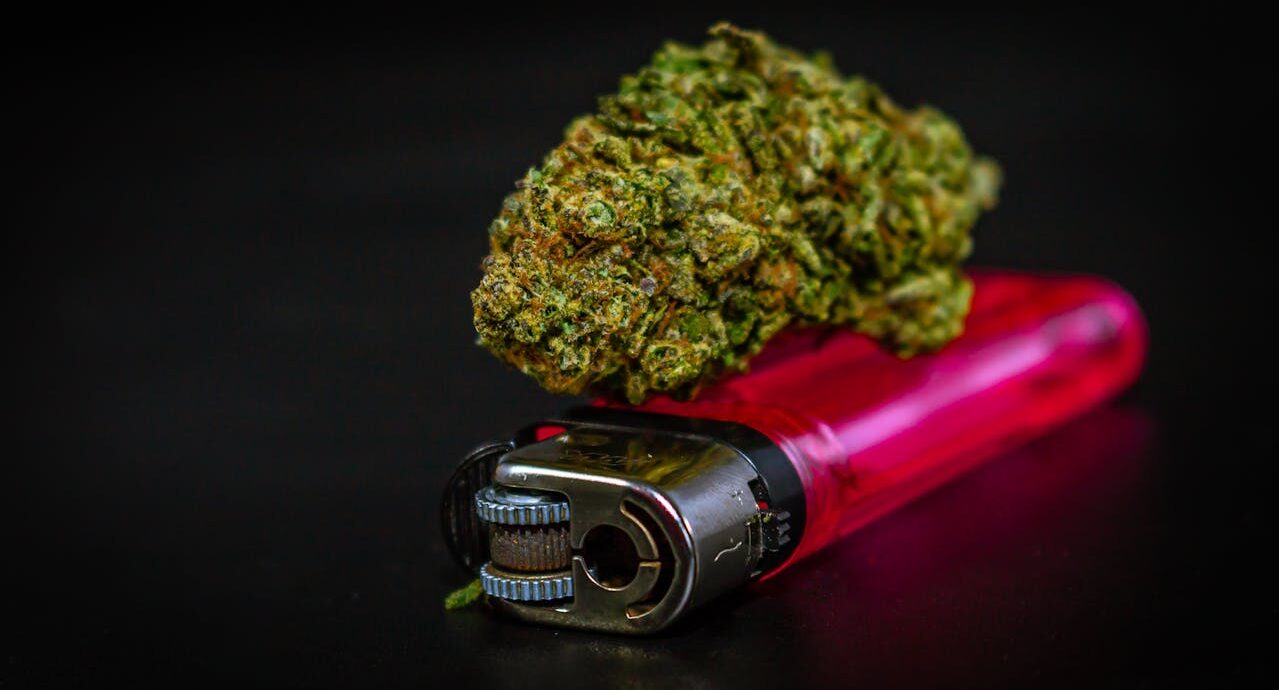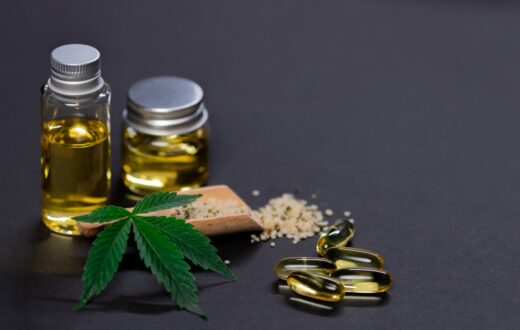Introduction to Critical Fast Strains
Critical Fast strains have gained attention within the cannabis cultivation community for their remarkable capacity to deliver quick yields without sacrificing quality. Originating from the famous Critical strain lineage, these fast-producing varieties have been genetically refined to meet the demands of growers who seek efficiency in their cultivation processes. This section aims to shed light on the impressive characteristics of Critical Fast strains and underscore their significance in modern cannabis gardening.
One of the most notable traits of Critical Fast strains is their relatively short flowering period, which typically ranges between six to eight weeks. This attribute enables growers to complete multiple harvests in a single growing season, a particularly advantageous feature for those operating on tight schedules or in climates with shorter growing seasons. The quick turnaround time provided by these strains contributes to maximizing yield potential, making them an attractive option for both novice and experienced growers. Furthermore, the genetic make-up of Critical Fast strains ensures that they maintain the robust and dense bud structure synonymous with the original Critical lineage.
In addition to their rapid growth characteristics, Critical Fast strains are often perceived as foolproof choices due to their resilience against common pests and diseases. This attribute increases their suitability for various growing environments, including indoor, outdoor, and greenhouse setups. As a result, they are frequently favored by cultivators looking to optimize their yield while minimizing the risks associated with crop loss. Understanding the specific traits of Critical Fast strains is essential for growers who wish to implement effective cultivation strategies that will enhance both the quality and quantity of their harvests.
Understanding the Growth Cycle of Critical Fast
The growth cycle of Critical Fast strains is a crucial aspect that cultivators need to comprehend fully to achieve optimal yields. This particular strain is renowned for its rapid growth and efficient lifecycle, making it an appealing choice for cultivators who value both quality and time. The process begins with germination, typically taking 24 to 72 hours for seeds to sprout. It is vital to maintain a warm, moist environment during this stage, as this will ensure the seedlings emerge strong and healthy.
Once the germination phase is complete, the plant transitions into the vegetative stage. This period usually lasts around 4 to 6 weeks and is characterized by significant growth in size and leaf production. During this time, growers should focus on providing adequate light, water, and nutrients to maximize growth potential. Utilizing techniques such as topping and low-stress training can further enhance the plants’ development, resulting in a robust structure that supports future flowering.
Following the vegetative phase, Critical Fast strains move into the flowering stage, which develops over approximately 6 to 8 weeks. At this point, hormonal changes initiate bud formation, and the plants require differing nutrient inputs compared to the previous stage. It is recommended to switch to bloom fertilizers that cater to the specific needs of flowering plants. Additionally, it’s essential to monitor light exposure, as reducing the hours of light can trigger the flowering process. The key to successfully growing Critical Fast lies in understanding these vital stages of its growth cycle, allowing for strategic planning and management of each phase to optimize the overall harvesting schedule.
Selecting the Right Environment for Growing
Creating an optimal environment is crucial for successfully cultivating Critical Fast strains, which are known for their rapid growth and high yield. The choice between indoor and outdoor growing setups affects not only the growth rate but also the quality of the cannabis produced. Indoor growing offers greater control over environmental variables such as temperature, humidity, and light, allowing cultivators to create the perfect conditions for the Critical Fast strain to thrive.
When opting for an indoor setup, it is vital to maintain temperatures between 70°F to 85°F (21°C to 29°C) during the light cycle and slightly cooler during the dark period. Maintaining a stable temperature helps the plants perform photosynthesis efficiently, a key process for how to grow Critical Fast optimally. Furthermore, humidity levels should be kept between 40% to 60% during the vegetative stage and reduced to 30% to 50% during flowering to prevent mold and mildew, which can compromise plant health.
On the other hand, growing outdoors has its own advantages, such as natural sunlight and lower operational costs. However, outdoor growers must contend with weather variability and changing seasonal conditions. For those choosing this method, ensuring the plants are in a location that receives ample sunlight while being protected from strong winds is crucial for healthy growth. The ideal outdoor temperatures echo indoor requirements, ideally falling within the same range mentioned earlier.
Regardless of the environment selected, proper lighting is a determining factor in growth success. Implementing full-spectrum grow lights for indoor cultivation mimics natural sunlight and supports all growth stages. In contrast, outdoor growers should schedule planting to optimize sunlight exposure throughout the Critical Fast’s lifecycle. Establishing a suitable environment lays the groundwork for a successful growing experience, thus enhancing the potential yield of Critical Fast strains.
Soil and Nutrient Requirements
When it comes to cultivating Critical Fast strains, selecting the right soil and nutrient sources is vital for optimizing growth and achieving high yields. Critical Fast cannabis grows best in well-draining, nutrient-rich soil that retains moisture without becoming waterlogged. A mix of high-quality potting soil, perlite, and vermiculite offers an excellent medium, ensuring aeration and promoting healthy root development.
The balance of macronutrients—nitrogen (N), phosphorus (P), and potassium (K)—along with essential micronutrients such as calcium, magnesium, and iron, plays a crucial role in the overall health of your plants. During the vegetative phase, a nitrogen-rich nutrient solution is essential to promote vigorous growth. As plants transition into the flowering phase, an increase in phosphorus and potassium supports bud formation and enhances flower density, which is critical for maximizing yield.
Growers often face the choice between organic and synthetic nutrients. Organic options, such as composts and natural fertilizers derived from plant or animal sources, foster a healthy soil microbiome that can lead to more flavorful and aromatic buds. In contrast, synthetic nutrients offer the advantage of precise formulations, which can deliver immediate and measurable results. Understanding the specific needs of your Critical Fast strains will help determine the most suitable nutrient regimen.
For nutrient brands, products specifically formulated for cannabis cultivation, such as Advanced Nutrients or General Hydroponics, are popular choices among growers. Feed schedules should be tailored to plant growth stages, with seedlings receiving diluted nutrients initially, while mature plants may thrive on concentrated solutions. Monitoring soil pH and nutrient levels regularly ensures that the plants receive the optimal conditions necessary for robust growth, reinforcing the fundamentals of how to grow Critical Fast efficiently.
Watering Techniques and Maintenance
Effective watering techniques are essential for cultivating healthy cannabis plants and achieving a high yield. Understanding the relationship between soil moisture levels and plant health is the cornerstone of successful watering practices. The primary goal is to maintain optimal moisture in the growing medium, as both overwatering and underwatering can have detrimental effects on plant growth.
To determine appropriate soil moisture levels, one should regularly check the top few inches of soil. A simple method is to insert a finger into the soil; if it feels dry at 1-2 inches deep, it is time to water. Conversely, if the soil feels moist, it is advisable to wait before the next watering. Often, cannabis plants thrive when their soil dries out slightly between watering sessions, as this encourages healthy root growth and nutrient uptake.
The frequency of watering depends on several factors including plant size, growth stage, and environmental conditions such as humidity and temperature. During the vegetative stage, most growers find that watering every 2-3 days is sufficient, while flowering plants may require more frequent, smaller amounts of water to promote bud development without saturating the roots.
Utilizing proper watering techniques can help prevent the common issues associated with both overwatering and underwatering. Overwatering can lead to root rot, oxygen deprivation, and nutrient deficiencies, while underwatering may cause stress in plants, resulting in stunted growth and reduced yields. Employing methods such as a drip irrigation system or utilizing moisture sensors can help maintain consistent watering and ensure the plants receive the optimum amount of water needed for healthy growth.
In conclusion, mastering effective watering techniques and maintenance practices is crucial for those looking to learn how to grow critical fast. By paying attention to soil moisture levels and adjusting watering frequency accordingly, cultivators can enhance plant health, ultimately leading to a successful and bountiful harvest.
Pest and Disease Management
Effective pest and disease management is crucial for the successful cultivation of Critical Fast cannabis strains. Numerous pests and diseases can threaten plant health and yield, making the identification and management of these issues essential for growers aiming to enhance productivity. Common pests that affect cannabis plants include aphids, spider mites, and whiteflies. These pests can cause significant damage by feeding on plant sap, leading to stunted growth and reduced yields. Furthermore, diseases such as powdery mildew and root rot can stifle plant development and compromise overall health.
To manage these threats, Integrated Pest Management (IPM) strategies can be employed. IPM involves a combination of biological, cultural, and chemical practices that reduce pest populations while minimizing harm to beneficial insects and the environment. For instance, introducing natural predators like ladybugs can help control aphid populations. Additionally, maintaining optimal growing conditions—such as humidity and air circulation—can significantly reduce the risk of diseases like powdery mildew.
Regular monitoring of plants is essential in detecting early signs of pest infestations or diseases. Growers should carry out weekly inspections, looking for drooping leaves, webbing, or any unusual discoloration. If issues are identified, organic treatments can be utilized as a first line of defense. Solutions such as neem oil, insecticidal soaps, and diatomaceous earth can effectively manage pests without harming the plants. It is also advisable to ensure proper spacing and pruning, which allows for better airflow and reduces the likelihood of disease outbreak.
Ultimately, understanding how to grow Critical Fast cannabis strains with robust pest and disease management practices will lead to healthier plants and higher yields. By implementing IPM strategies and leveraging organic treatments, growers can cultivate a thriving cannabis garden while minimizing the adverse impacts of pests and diseases.
Training Techniques for High Yields
When cultivating cannabis, particularly the Critical Fast strain, employing effective training techniques can significantly enhance plant growth and maximize yields. Several methods are available, each with distinct advantages, helping to achieve pinnacle results through strategic manipulation of the plant’s structure. Understanding how to grow Critical Fast while implementing these strategies is essential for optimizing output.
The first widely recognized method is topping, which involves cutting off the top of the main stem. This practice encourages the plant to develop multiple colas rather than a single dominant one. By doing so, you create a bushier plant structure, allowing for increased light penetration and airflow, ultimately leading to enhanced yield potential. It is advisable to perform topping when the plants have developed at least four to six nodes, providing enough growth for them to recover and thrive post-trimming.
Low-stress training (LST) is another highly beneficial technique. LST entails gently bending and tying down the stems and branches of the plant, promoting horizontal rather than vertical growth. This technique helps to expose more budding sites to light, which can significantly increase the overall yield. Implementing LST is often preferred by growers seeking a less invasive approach compared to topping, as it allows for continued growth without removing any plant material.
Finally, the Screen of Green (ScrOG) method combines the principles of both topping and LST. It involves placing a screen over the plants and weaving the branches through it as they grow. This method not only enhances light distribution but also supports the plant’s growth, leading to an even canopy that maximizes potential yields. ScrOG is particularly effective for Critical Fast strains, where uniform light exposure can expedite the growth cycle.
In conclusion, adopting various training techniques can dramatically improve the yield of Critical Fast cannabis strains. By employing methods such as topping, low-stress training, and ScrOG, cultivators can effectively stimulate bushier growth, which is pivotal for achieving higher harvests. Understanding these techniques lays the foundation for successful cannabis cultivation.
Harvesting and Curing Your Crop
Harvesting Critical Fast strains at the optimal time is a pivotal aspect of high-yield cannabis cultivation. Timing is key; growers should monitor trichomes closely, as they indicate the perfect moment for harvest. The ideal phase is when approximately 70-80% of the trichomes have turned cloudy, with a few amber ones present. This window ensures maximum potency and flavor, critical factors in the appeal of the final product. Additionally, the surrounding pistils should show signs of browning, indicating ripeness. Utilizing tools such as jeweler’s loupes can facilitate a thorough examination of the trichomes.
Upon determining the right time, the harvesting process can begin. It is advisable to cut the branches rather than uprooting the entire plant, as this helps retain moisture within the buds. To further prevent mold and maintain flavor, it is essential to handle the buds gently to avoid breaking the delicate structures. After clipping, the buds should be placed in a cool, dark, and well-ventilated space to dry.
The drying process typically takes about 5 to 10 days, depending on environmental conditions. Growers should aim for a relative humidity of about 50-60% to achieve optimal drying rates. Monitoring the buds is crucial; they should feel dry on the outside but still retain a slight moisture content internally. Once dried adequately, the curing phase can commence, which amplifies the flavor and potency of the Critical Fast strain.
Curing involves placing the dried buds into airtight containers, such as glass jars, and storing them in a cool, dark area. For the initial week, jars should be opened daily for a few minutes to allow fresh air exchange. This process, known as burping, helps prevent moisture accumulation and promotes the development of rich terpenes. A well-executed curing process not only enhances the overall smoking experience but also significantly contributes to the desired quality of the cannabis. By adhering to these harvesting and curing practices, growers can ensure that their Critical Fast strains deliver on both flavor and potency.
Conclusion and Final Tips for Successful Growth
Growing cannabis, particularly the Critical Fast strain, requires careful attention to various key elements of cultivation. Throughout this comprehensive guide, we have explored essential practices that can significantly enhance the speed and yield of your growth process. It is imperative to select quality seeds, as the foundation of successful cultivation lies in your choice of genetics. By choosing robust and well-bred Critical Fast seeds, you set the stage for prolific results.
Furthermore, understanding the growth stages of the Critical Fast strain is crucial. Each phase of growth—seedling, vegetative, and flowering—demands specific care and nutritional support. Adhering to the optimal light cycles, maintaining appropriate humidity and temperature levels, and providing adequate nutrients at each stage are vital practices for minimizing potential stressors that could impede growth.
An additional significant aspect of cultivating Critical Fast cannabis is the use of appropriate growing mediums. Soil, coco coir, or hydroponics can each offer distinct advantages, and tailoring your choice to fit the needs of your plants and environment will foster healthier development. Additionally, employing techniques such as pruning and utilizing SCROG (Screen of Green) methods can further enhance light exposure and promote bushier growth, which is beneficial for maximizing yields.
Finally, staying engaged with fellow growers through community forums and resources enhances your cultivation journey. Learning from shared experiences and finding answers to questions is invaluable. Online platforms and local gardening clubs can be excellent places to seek advice, share tips, and gain insights into progressing your skills. With the right approach and dedication, mastering how to grow Critical Fast can lead to rewarding harvests.














